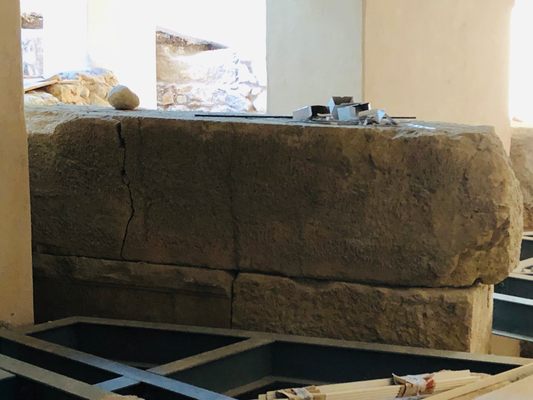About
Several fortification walls protected Athens beginning in ancient times. The Themistoclean Wall was built in 479 B.C., and served as the city's main line of defense for many years. The Protocheisma, built in 338 B.C., and the Diateichisma, built in 280 B.C., were additional walls built in strategic areas as a second line of defense. While Athenians repaired the Themistoclean Wall, Protocheisma and Diateichisma in 260, they also built the Valerian Wall as an additional fortification to protect the city.
All of the Athenian walls were constructed using materials gathered from buildings and monuments that were destroyed over the centuries. These walls remained the main line of defense for Athens until the Ottoman era, but over time they were disassembled, decayed, and disappeared.
The Makrygianni area of Athens sits on the south slope of the Acropolis. This area was populated as early as 3500 B.C. and thrived until the 12th century. The neighborhood was sparsely populated by the 13th century and was not settled again until the early 1800s.
By the 1950s, the area of Makrygianni south of Dionysiou Areopagitou consisted mostly of mid-war and Neoclassical buildings. Various construction projects over the centuries have revealed ruins and artifacts in the area. One excavation in 1958 revealed sections of the Valerian Wall that extended under the foundation of a seven-story commercial building. Another excavation in 1973 revealed additional ruins in the immediate area.
When the owners of the building received approval to convert the building to a hotel in 2016, it was done so conditionally due to strict Greek laws protecting archaeological sites and artifacts. The renovation plans ensured protection of the walls outside and underneath the building. Reinforced glass flooring was placed above the ruins of the wall, so they can be admired from the sidewalk. The interior ruins were put on open display through reinforced glass floors in the lobby and open displays on the lower level.
Related Tags
Know Before You Go
This portion of the Valerian Wall is on display 24/7. The exterior area is well lit at night however all should be aware of nearby fast moving traffic. The interior display is in the lobby and lower level of the hotel. There are stairs and an elevator that access the lower level. The area is cavernous and noise carries, so it is asked that voices be kept down. Hotel security is monitoring the area on CCTV cameras and roving officers are present to protect the wall and artifacts. The hotel staff have basic knowledge of the display, are not archaeology experts (nor expected to be) and are deserving of respect.
Community Contributors
Added By
Published
May 26, 2020








































